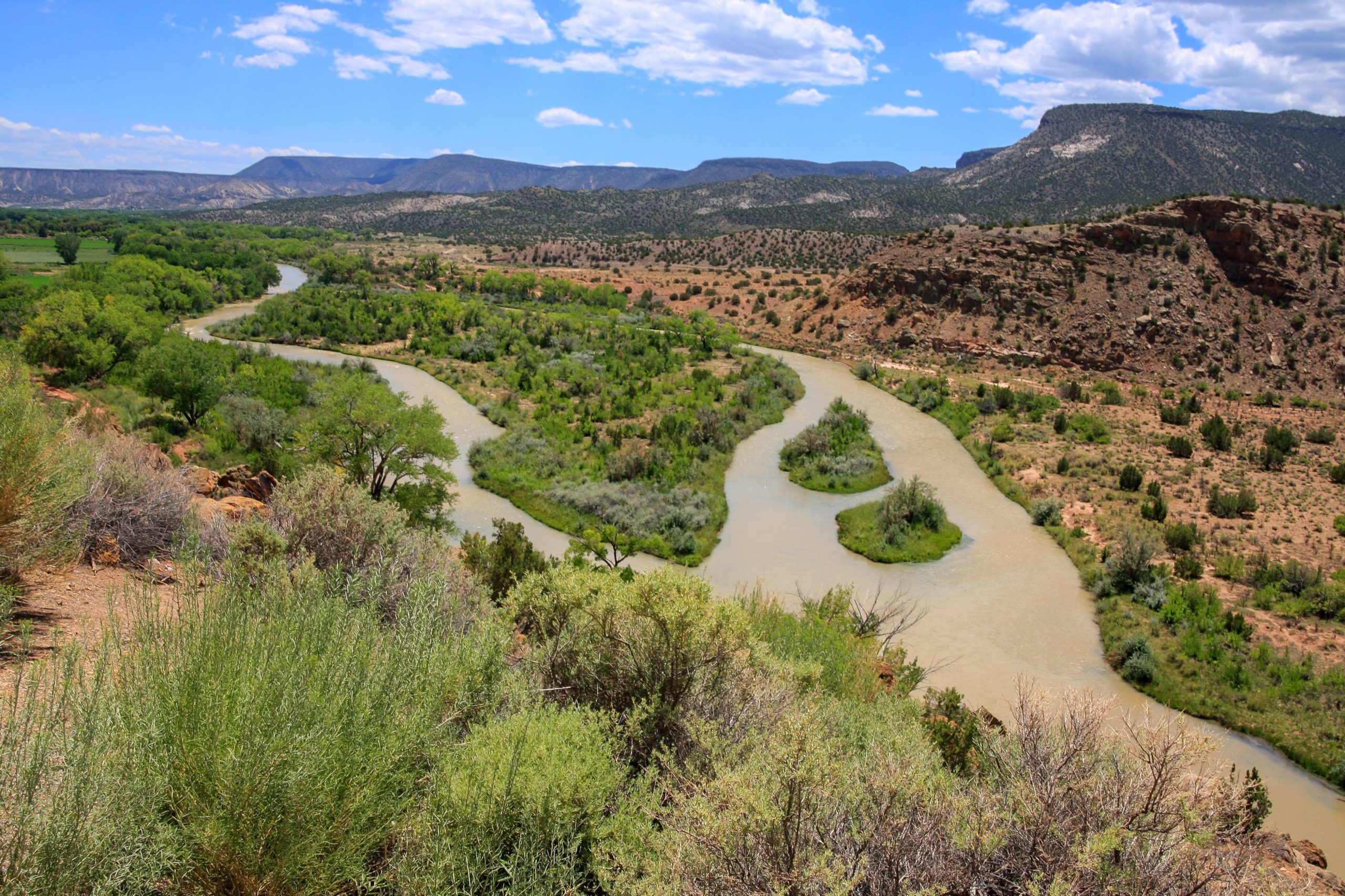Why a 19th-century invention is only now finding its place in the sun as a 21st-century energy source.
Greg T. Spielberg | October 2010 issue
The SunCatcher is an enormous solar dish made of mirrors and metal, but it’s best thought of as a giant silver flower.
At thirty feet (11 meters) tall, the SunCatcher is almost four times bigger than the world’s largest biological flower, the Sumatran titan arum. It has parabolic petals that appear virtually flat, like those of a buttercup. The device is made up of 40 mirrors, tightly arranged into a 3,400-square-foot (315-square-meter) dish that, like a real flower, angles toward the sun. Unlike flora, however, the SunCatcher utilizes heat rather than light, transforming it into electricity. And there’s very little watering required.
Arizona-based Stirling Energy Systems makes the SunCatchers, which have shown great promise in the increasingly competitive renewable energy market. South of Phoenix, Arizona, 60 SunCatchers are programmed to rise in the morning and spend the rest of the day following the sun’s rays. The array produces 1.5 megawatts of energy for customers of Salt River Project, a utility company. The system is part of a pilot project meant to prove the technology’s potential as a utility-grade energy source. Stirling engines like the SunCatcher could deliver a big boost to the search for clean, renewable sources of energy.
In 1816, Robert Stirling, a Scottish reverend from a family of engineers, sought an alternative to the steam engine. Steam, he felt, required too much pressure to fuel machinery and resulted in too many explosions, causing accidental deaths and severe burns. His invention—the Stirling engine—didn’t require intense pressure, thus eliminating the threat of explosion. Rather than utilizing an external source like water for power, the Stirling engine uses a contained internal gas, which is alternately heated (often by kerosene and wood in Stirling’s day) and cooled to produce energy. (For details of the process, see “How a Stirling engine works.”)
But the Stirling engine has always floundered commercially. The device could only generate industrial-strength power at very high temperatures, which melted most 19th-century machinery. So instead of competing with steam, Stirling engines found only niche applications. The Rider-Ericsson Engine Company based in Walden, New York, for example, advertised its Stirling engines to Western ranchers as a way to deliver water to cattle. Instead of driving cattle to water sources, ranchers could use the engine to pump water from the ground into reservoir tanks.
The same kind of device was promoted to the urban market to pump water onto the upper floors of tall buildings before the necessary water pressure became a norm in cities. It was at the time also advertised as a faster alternative to the neighborhood fire brigade. “The feeling of security … will alone repay [the owner] many times its cost,” read an ad from the early 20th century.
Brent Rowell, an adjunct professor in the horticulture department at the University of Kentucky, saw contemporary applications for Stirling devices, which by 1910 had been more or less consigned to the scrapyard of technological history. Rowell, who works with International Development Enterprises, a non-profit dedicated to agriculture and economic improvement in developing countries, got his first taste of the Stirling two decades ago at a museum in northern Thailand. Interested in early machinery, Rowell came across a display of a fan he couldn’t quite understand. “There was obviously no electric cord, and I could see the [unlit] kerosene lamp but had no idea how it worked,” he recalls.
Luckily, the museum’s owner, a wealthy banker from Bangkok, happened to be on the premises that day. After Rowell shared his curiosity, the two men went outside with the device, lit the kerosene lamp and watched the fan start humming.
His trip to the Thai museum got Rowell hooked on Stirlings. He and his wife live in Myanmar 10 months of the year, but during the rainy season retreat back home to Kentucky. There he restores Stirling engines, including the 500-pound Rider-Ericsson water pumps, as a hobby, and has rebuilt his own Stirling-powered fan, which comes in handy during the frequent power outages in Myanmar.
Stirling engines would be perfect power sources for the developing world, except for one problem—the cost. No low-priced Stirling engines exist, nor is there any government interest in funding them. Craig Kinzelman and William Beale discovered this the hard way. Kinzelman produced Stirlings in Bangladesh 20 years ago; when his financial backers dropped out, he set up a joint venture with an Indian company in Madras, producing more than 100 engines before running out of cash.
The advantage of the Stirling engine is obvious. It is a microgeneration technology, so there is no need for an elaborate electricity grid. Just set up a solar-powered Stirling engine and a heat source and let the motor whir away, generating power or pumping water. Kinzelman’s Madras engines produced two to three kilowatts of power each, pumping water primarily for irrigation but also for laundry and showers. Kinzelman believes that with non-profit or government support, Stirlings can swing into action again. “The cruel little secret is that there is no Stirling engine that you can purchase right now at any sort of a cost-competitive price, except toys,” he says.
The National Aeronautics and Space Administration (NASA) can afford Stirling engines and uses them to power satellites. Beale, founder of Ohio-based SunPower, which makes high-priced Stirlings for NASA, also laments the fact that there has not been “a breakthrough for the cost.” He doubts he’ll see commercial microgeneration applications of the technology in his lifetime. Meanwhile, at least one company hopes Beale is wrong; Colorado-based Cool Energy is building Stirling engines to cut energy bills in the home.
John Ericsson, co-founder of the Rider-Ericsson Engine Company, saw the potential of the Stirling engine in particular—and of solar power in general—at least 150 years before most everybody else. He also foresaw the obstacles the technology would face. “Those regions of the earth which suffer from an excess of solar heat will ultimately derive benefits resulting from an unlimited command of motive power,” he wrote in London’s Engineering Journal in 1870. Then, in 1888, he wrote a letter to Nature magazine, stating, “You will probably be surprised when I say that the sun-motor is nearer perfection than the steam engine, but until the coal mines are exhausted its value will not be fully acknowledged.”
Ericsson not only predicted the importance of solar power; he anticipated how the reliance on fossil fuel could stymie innovation, too.
Ericsson devoted tremendous effort to developing a solar-powered engine, but didn’t succeed because of crude solar collectors. He singled out places like the equatorial regions and “lower California,” though, as special solar power hotspots. And in fact, the western U.S. is one of the places where a version of Ericsson’s Stirling-inspired invention is already cranking out energy.
Since January, Salt River Project’s 60 SunCatchers have been producing power for customers. Stirling Energy Systems and Tessera Solar, Stirling’s solar division, also plan to provide energy to Southern California Edison and San Diego Gas & Electric as part of an ambitious plan to have some 65,000 SunCatchers blossom across California’s arid southwest. A success here would demonstrate the technology’s potential effectiveness in other desert areas, too, like Northern Africa, where an international cooperative is working on solar projects to address Europe’s energy needs.
Stirling has a few distinct advantages over conventional photovoltaic panels and other concentrating solar power (CSP) technology. Stirling engines are efficient, exceeding 31 percent efficiency rates in converting mechanical energy to utility-grade electricity. Photovoltaic panels, meanwhile, only reach 15 percent, according to Blair Loftis, national director of alternative and renewable energy at Kleinfelder, an energy and construction consulting firm. Stirling dishes also take up less space. Photovoltaic arrays need up to 2,500 acres (more than 1,000 hectares) of almost perfectly flat land, while Stirlings can roost on uneven terrain.
Then there’s the water, an increasingly crucial issue in the driest climates. According to figures from Arizona Department of Water Resources industrial planner Laura Grignano, coal and nuclear plants use 400 to 750 gallons (1,500 to 2,800 liters) per megawatt hour to cool the plants and produce the steam that propels the turbines. Natural gas plants use 200 gallons (750 liters) to produce steam, while other solar systems use 100 to 450 gallons (375 to 1,700 liters) for steam. Stirling dishes sip just 20 gallons (75 liters) per megawatt hour; the only water needed is to clean the silver mirrors. In fact, Tessera Solar’s plant consumes less water than the farmer who previously occupied the land the company leases from Salt River Project.
While Stirling dishes are clean, efficient, low-water energy producers, the technology has been hit with skepticism even among those in the renewables community, mostly because of the high development costs.As a result, for-profit companies have shown only a passing interest in Stirlings. During the 1990s, for example, Cummins, an Indiana-based manufacturer of diesel engines and other heavy machinery, pulled out of Stirling production—despite having made cost-sharing agreements with the U.S. Department of Energy and the government-funded Sandia National Laboratories.
More recently, Stirling’s evolution from an enthusiasts’ hobby to a utility-grade power source has been aided by government funding, new legislation and the imperative to find replacements for fossil fuels. In 2008 and 2009, Irish multinational NTR invested heavily—to the tune of $150 million—in Stirling Energy Systems. Tessera Solar has some heavyweight backing, too, including long-term deals that will give the company time to bring the price of Stirling energy down so it can compete with coal-fired plants. These kinds of investments show that Stirling engines are definitely moving out of the hobbyists’ basements and into the mainstream.
Stirling technology not only reduces C02 emissions; it can create employment, too. As U.S. automakers shed jobs over the next decade, the construction of Stirling devices and other solar parts can take up some of the slack. For example, Tower Automotive of Livonia, Michigan, 15 miles west of Detroit, builds the metal frames for Stirling dishes and plans to open a plant in Goodyear, Arizona, that will employ 200 workers. Linamar, Canada’s second-largest manufacturer of auto parts, constructs Stirling’s power conversion units and is set to open a facility in Glendale, Arizona. Early this year, the company announced it will hire 1,200 more employees to fill the need, an estimated 50 of them in Arizona.
Last but certainly not least, of course, on the list of potential beneficiaries from the success of the Stirling engine is the environment. Rev. Stirling was concerned about safety when he developed his alternative engine. He would surely have had similar concerns about the oil spill in the Gulf of Mexico for which we’ve paid such a high price—in lives and in environmental and economic damage. “Who can foresee what influence an inexhaustible motive power will exercise on civilization, and the capability of the Earth to supply the wants of our race?” John Ericsson wondered as he tinkered with his Stirling engines.
The answer may be unfolding right now in the garden of SunCatchers just south of Phoenix, Arizona.
Greg T. Spielberg, a New York-based journalist who sleeps in a windowless bedroom, thinks a Stirling fan would have come in handy on hot summer nights.











